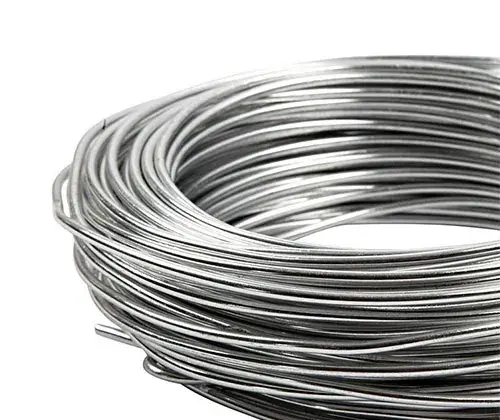
Aluminum Wire Market Research
The enameled aluminum wire market by product is divided into enameled wire, insulated paper wire, fiberglass insulation, Nomex insulation, mica insulation and cotton insulation. The enamel market Looking ahead, the paper insulation market is the segment that is expected to become the fastest growing segment of the aluminum wire market, subdivided into products, with a CAGR of 4.2% from 2021-2026. The aluminum wire market is also divided by grade into electrical, alloy and mechanical. The machinery market is the largest segment of the aluminum wire market by grade, accounting for 60.1% of the total in 2021. Looking ahead, Electric expects the segment to be the fastest growing segment in the aluminum wire market by grade, with a compound annual growth rate of 3.8 percent from 2021 to 2026. The aluminum wire market is also segmented by end user into aerospace, Rail, other transportation, building and construction, Energy, robotics, packaging, and other end users. The construction and construction end-user market is the largest segment of aluminum’s end-user segmented wire market, accounting for 2021% of the 26.0 year total. In the future, the robot end user segment is expected to be the fastest growing segment. The aluminum wire market is segmented by end user with a CAGR of 4.1% from 2021 to 2026.

Asia Pacific is the largest region in the global aluminum wire market, accounting for 44.2% of the total in 2021. It was followed by North America, Western Europe and then other regions. Looking ahead, the fastest growing regions for the aluminum wire market will be the Middle East and Asia-Pacific regions, with CAGR of 3.64% and 3.56%, respectively. This is followed by Africa and South America, where the market is expected to grow at a CAGR of 3.28% and 3.06% in 2021, respectively – 2,026. The major opportunity in the aluminum wire market segmented by product will be in the paper insulation segment, which will generate global annual sales of US $5,216.6 million by 2026. The major opportunity for the aluminum wire market segmented by grade will be in the machinery segment, which will generate $5.022 billion in global annual sales by 2026. The top segment of the aluminum wire market by end user opportunities will arise in the construction and construction segment, which will generate global annual sales of $2,472.6 million, 2,026. The aluminum wire market will grow the most in China, reaching $2.293.5 billion. Players in key markets in 2022 include allied companies Rusal LTD., Vedanta Resources LTD., Novametal SA, Grupo General Cable Sistemas, S.L And Alro S.A. Kaiser Aluminium, Southern Cable, Southern Wire Company, LLC, Sam East America, Priority Wire and Cable Company, Chalco, Finolex Cables, Havells India, Sydney Copper Scrap, Victoria Metal Traders, Badger Wire, Remer SRL, Wagner, Gertman AG, WMH Group, General Cable, Norsk Hydro, Blecha GMBH, Nok Metal GMBH, Aco Eurobar GMBH, Lp Trading GMBH, Robot Unit GMBH, Level 7 Metals, Alcoa, Century Aluminum, Pennex Aluminum, Alaluminum, Termomecanica, Hydro.com, Alcan Brasil, Nexan Brasil, Catalag Condusspar, Votorantim CBA, Aluar Aluminio Argentino S.A.I.C, Sural C.A., Emirates Global Aluminium, Aluminium Bahrain, Ma’aden Aluminium, Qatalum, Sohar Alum, Iran Aluminium Company, Egypt Aluminium, Aberdare Cable Co., LTD., Africa Cable (Private) Limited, CCG Cable Terminal, Nanyang Holdings Limited, General Cable subsidiary — Sahara Africa, Power Technologies Limited are the major market players.
The global aluminum wire market is expected to reach $72.41 billion in 2031 in 2022. The global aluminum wire market reached nearly $53.337.7 billion in 2021, growing at a compound annual growth rate (CAGR) of 2.58% since 2016. The market is expected to grow from $533,37,700 in 2021 to $62,078.3 million in 2026 with an interest rate of 3.08%. The market is then expected to grow at a CAGR of 3.13% from 2026 onwards and reach $72,4102 million in 2031. The historical period of growth resulted from the increase in electricity consumption, the increase in electricity consumption and the growth of the automobile industry in emerging economies. Factors inhibiting growth historically in the aluminum wire market include volatile metal prices and regulatory challenges. Looking ahead, the growing adoption of Ethernet, developments in the medical device industry and updates to transmission networks will drive market growth. Possible factors hindering the future growth of the aluminum wire market include the reduction of free wire trade and availability of alternative products. The aluminum wire market is highly fragmented with a large number of small players. In 2020, the top 10 competitors in the market will account for 5.16% of the total market.
